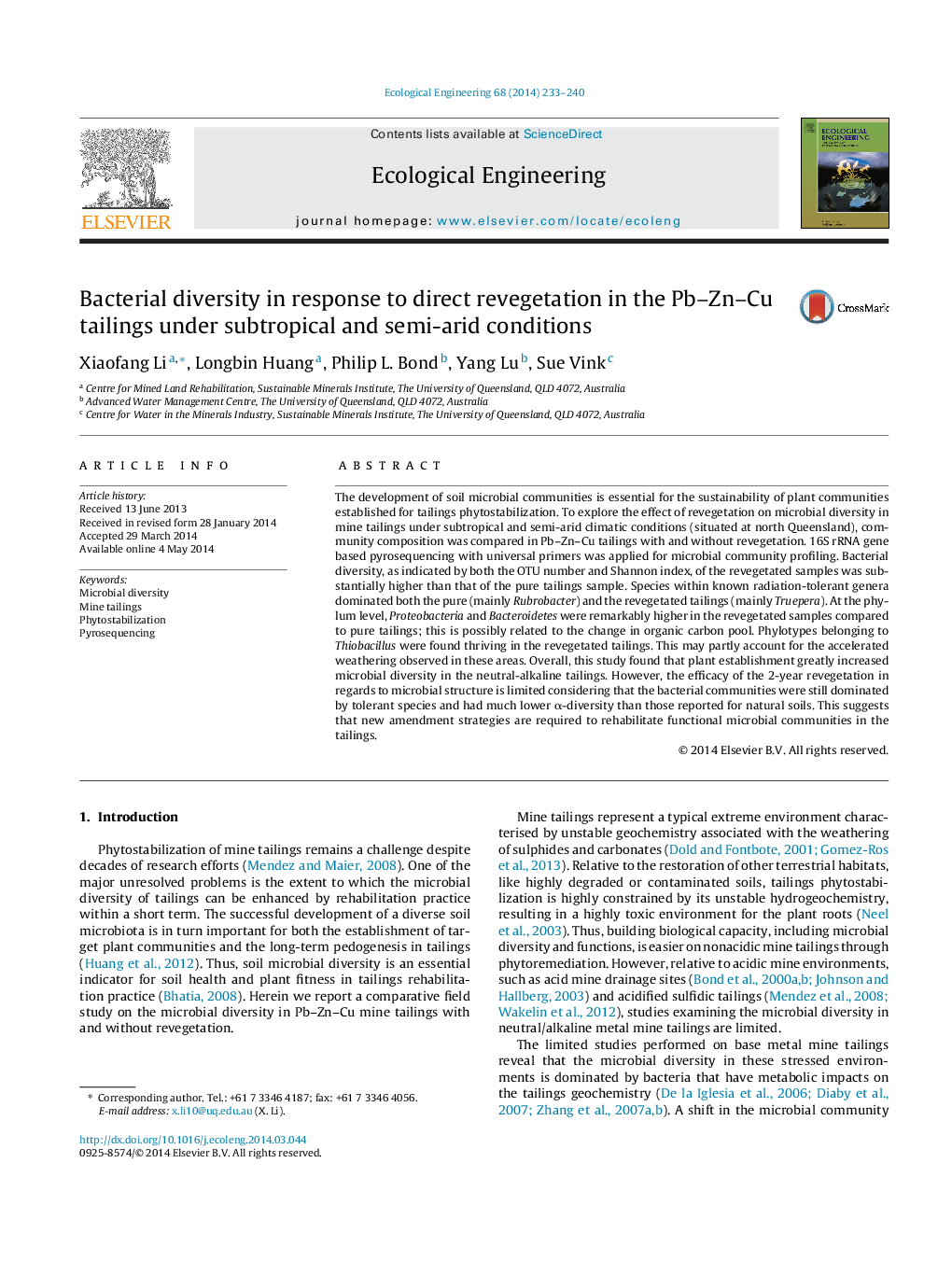| Article ID | Journal | Published Year | Pages | File Type |
|---|---|---|---|---|
| 6302325 | Ecological Engineering | 2014 | 8 Pages |
Abstract
The development of soil microbial communities is essential for the sustainability of plant communities established for tailings phytostabilization. To explore the effect of revegetation on microbial diversity in mine tailings under subtropical and semi-arid climatic conditions (situated at north Queensland), community composition was compared in Pb-Zn-Cu tailings with and without revegetation. 16S rRNA gene based pyrosequencing with universal primers was applied for microbial community profiling. Bacterial diversity, as indicated by both the OTU number and Shannon index, of the revegetated samples was substantially higher than that of the pure tailings sample. Species within known radiation-tolerant genera dominated both the pure (mainly Rubrobacter) and the revegetated tailings (mainly Truepera). At the phylum level, Proteobacteria and Bacteroidetes were remarkably higher in the revegetated samples compared to pure tailings; this is possibly related to the change in organic carbon pool. Phylotypes belonging to Thiobacillus were found thriving in the revegetated tailings. This may partly account for the accelerated weathering observed in these areas. Overall, this study found that plant establishment greatly increased microbial diversity in the neutral-alkaline tailings. However, the efficacy of the 2-year revegetation in regards to microbial structure is limited considering that the bacterial communities were still dominated by tolerant species and had much lower α-diversity than those reported for natural soils. This suggests that new amendment strategies are required to rehabilitate functional microbial communities in the tailings.
Related Topics
Life Sciences
Agricultural and Biological Sciences
Ecology, Evolution, Behavior and Systematics
Authors
Xiaofang Li, Longbin Huang, Philip L. Bond, Yang Lu, Sue Vink,
